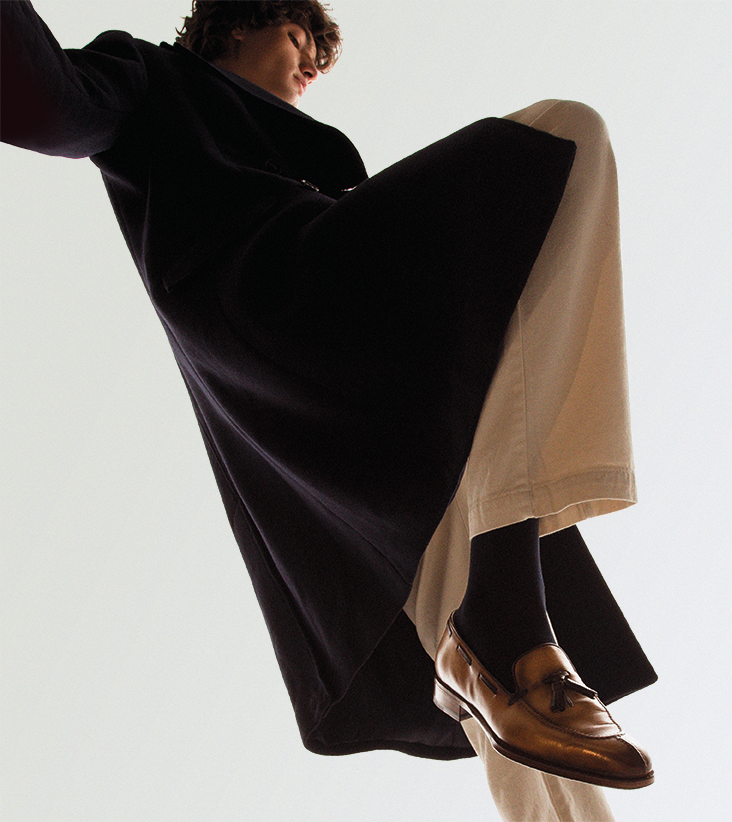
Par un passionné pour les passionnés
(EN text included) Bien connue des calcéophiles, la marque Mario Bemer demeure injustement méconnue du grand public, ce qui est regrettable tant du fait de la personnalité et de la qualité de ses produits, qu’en raison de son histoire, qui s’inscrit en plein dans la perspective de la slow fashion chère à nos yeux. Une bonne raison de la découvrir plus avant à l’occasion d’un voyage à Florence.
Dans le petit univers de la chaussure de qualité le nom de Bemer fut porté au pinacle par Stefano Bemer, brillant bottier qui fut une sorte de Petit Prince de la profession. Sa disparition prématurée, à l’âge de 48 ans, au terme d’une longue maladie, plongea le métier dans l’affliction. Exclusivement concentré sur son art (il s’était donné pour objectif de produire rien moins que « les meilleures chaussures du monde »), Stefano était encensé à Florence où son travail était apprécié à sa juste valeur, mais totalement inconnu à l’étranger, raison pour laquelle son frère Mario le rejoignit en 1999, afin de faire connaître la marque sur la scène internationale. Leur collaboration mènera à l’ouverture d’une boutique à Tokyo et surtout à la diversification de l’activité exclusive de bottier mesure à une offre prêt-à-porter de culture bottier. Durant une douzaine d’années Mario fut ainsi en immersion totale dans la recherche de perfection permanente de son frère, et à la disparition de celui-ci en 2012, décida de perpétuer son nom. Pour lancer la marque Mario Bemer, qui bénéficiera du même niveau d’exigence que Stefano Bemer, il s’associe avec Luca Nardini, héritier d’une famille de fabricants de chaussures attaché au style autant qu’à la technique.
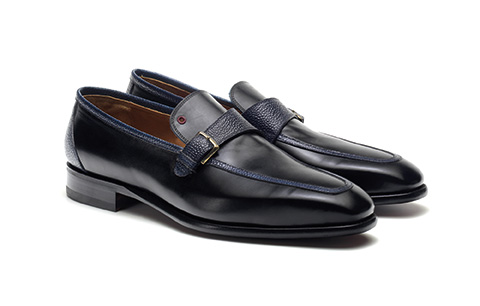
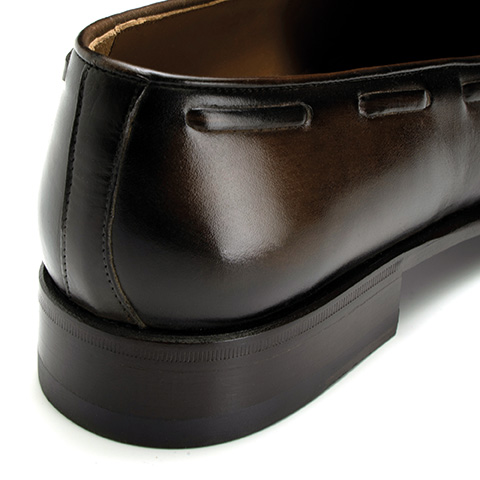
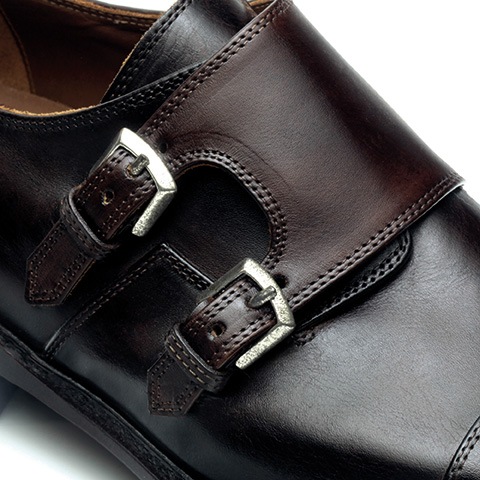
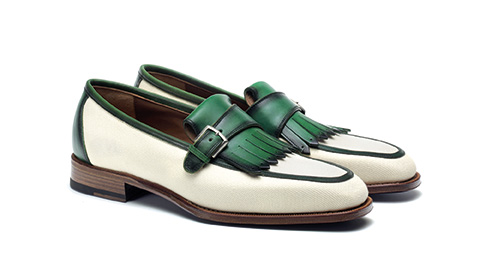
Une famille de bottiers depuis 1930
Lorsque les deux hommes se rencontrent, Luca Nardini jouit d’une réputation bien plus ancienne que Mario Bemer. Dans sa famille, la tradition de la chaussure homme remonte à cinq générations. Elle voit le jour en 1930 avec Nardino Nardini, l’arrière-arrière-grand-père de Luca, qui fut le premier bottier de la famille. Comme c’était à l’époque souvent le cas, il transmit son art à son fils, Alberto, dans le tumulte de la deuxième Guerre Mondiale. Celle-ci terminée, Alberto ouvre un atelier de botterie à Monsummano Terme, en Toscane, en 1946. Il y travaillera avec sa femme et y assurera la formation de leurs quatre fils, Moreno, Vinicio, Rinaldo et Roberto, qui le rejoindront successivement. Après la disparition d’Alberto en 1970, les quatre garçons poursuivront la tradition familiale jusqu’à ce que Vinicio, qui a formé au métier son fils Marco, décide d’arrêter la production de chaussures pour recentrer l’entreprise sur la conception, le prototypage et la modélisation, une activité qui prend son envol dans les années 1990, lorsque le marché de la chaussure explose pour prendre la dimension qu’on lui connait aujourd’hui, et que les grandes maisons décident toutes d’investir ce secteur connexe de celui du vêtement. Durant toute la décennie la maison Nardini va mettre son expérience et sa créativité au profit de nombreuses marques majeures, restant dans l’ombre de ces enseignes internationales. La vie de l’entreprise pourrait continuer sur ce business model bien rodé, mais l’arrivée de Luca, le fils de Marco, en 2001, va tout changer. Dynamique et ambitieux, le jeune homme veut recommencer à fabriquer des chaussures de très haute qualité, et parvient à convaincre son père et son grand-père de l’accompagner dans cette aventure. Leur expertise va peser très lourd dans la balance du succès. Très vite Vicinio, qui a connu l’époque du fabricant Nardini, va se prendre de passion pour cette nouvelle aventure, et se consacrer corps et âme à l’entreprise de son petit-fils, prenant personnellement en charge le design, la modélisation et le prototypage des premières collections. Il assurera ces fonctions jusque sa disparition, en 2016.
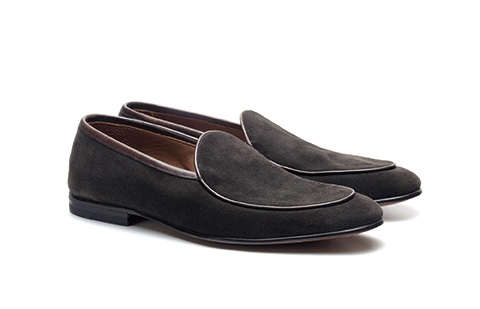
L’histoire et le parcours de l’entreprise, qui pérennisent le savoir-faire et la réputation du fondateur, sont jusque là assez comparables à ceux des quelques autres grands noms de la chaussure italienne. Jusqu’à ce que le destin vienne frapper à la porte. Car la rencontre de Luca Nardini et Mario Bemer va tout changer. Elle a lieu en 2012, à Florence. A l’époque Mario cherche à financer le lancement de sa marque éponyme, et pour cela se servir du nom qu’il porte et de l’image d’excellence qu’il renvoie. Avec Luca il rencontre non seulement un partenaire capable de financer le projet, mais surtout un homme qui connait tout de la fabrication de chaussures, depuis la conception jusqu’au produit fini. De son côté, Luca rencontre un homme du métier dont le nom promet une vision, supplément d’âme indispensable pour faire d’une petite société une entreprise à succès. Les voici bientôt associés, le Président et associé majoritaire Nardini épaulé par un Bemer certes minoritaire mais sur le nom duquel repose la nouvelle marque. Le partage des rôles entre les deux hommes s’est fait de façon très naturelle : à Mario Bemer l’accueil et les discussions avec les clients dans la boutique de la Via Maggio, à Luca Nardini la double charge de l’innovation produit, pour laquelle il s’entoure des meilleurs artisans d’une région qui n’en manque pas, et du développement de la marque à l’international. L’absence d’implication de Mario Bemer dans la définition du style, des formes et patronages, ni même dans la production, n’est cependant pas sans poser problème au sein de la marque qui porte son nom, et crée une distance entre les deux associés, et bientôt le désaccord entre les deux hommes sur l’orientation à donner à la société devient manifeste. En 2018 Luca Nardini se sépare donc de Mario Bemer et reste seul à poursuivre l’aventure d’une petite maison florentine attachée au raffinement de son style et de son histoire, et à une qualité de fabrication sans compromis, en mesure autant qu’en prêt-à-porter : une page se tourne.
Une exigence de style et de qualité jamais démentie
L’héritage reçu de ses père et grand-père a donné à Luca Nardini une vision grand angle de son métier : d’un côté un attachement viscéral à la qualité de fabrication, laquelle suppose l’attention aux peausseries, au montage et aux détails, de l’autre l’importance du style, lequel fait au bout du compte qu’une chaussure plait ou ne plait pas. En bon Florentin, il sait l’importance et l’influence du Pitti Uomo sur les tendances et il a compris que la chaussure est passée en une génération du statut de faire-valoir d’une tenue à celui d’élément à part entière de cette tenue, voire d’élément déterminant de celle-ci. Une situation impensable voici une quinzaine d’années. Aussi pense-t-il les collections Mario Bemer pour cette nouvelle génération d’élégants qui consolide ses idées sur les blogs et les comptes Instagram dédiés à l’élégance, et peaufine-t-il pour elle des associations de matières et de couleurs, des doubles rangs de piqûres faites main, des trépointes cousues main, des loafers, des richelieu, des derbies, des boucles… A la base du succès de la marque : l’intemporalité de son style, basé sur un classique revisité, et la variété de son offre, qui repose autant sur ses patronages que ses montages, du Goodyear au Blake en passant par le Rapido, et bien sûr sur une triple proposition mesure, MTO et prêt-à-porter.
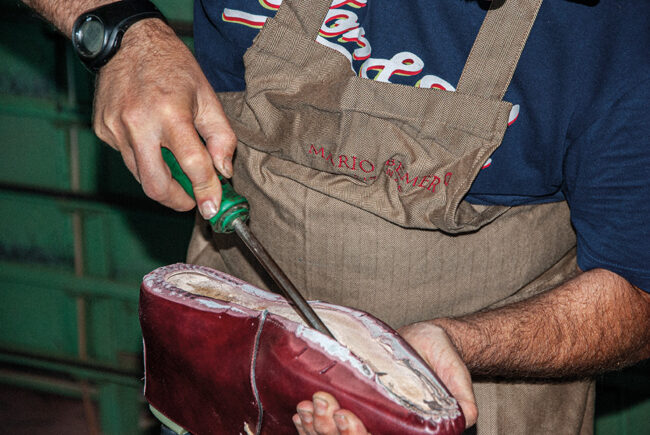
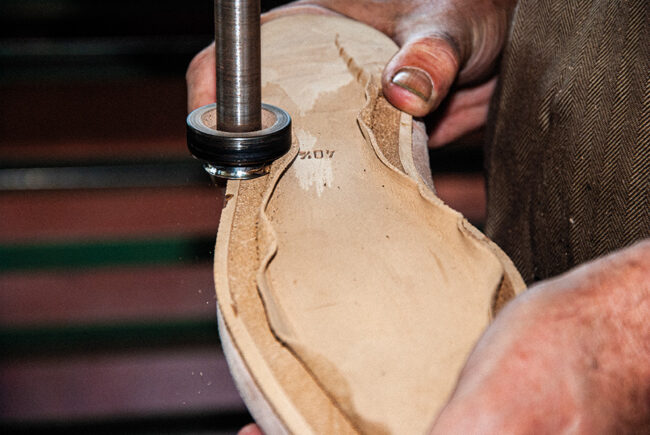
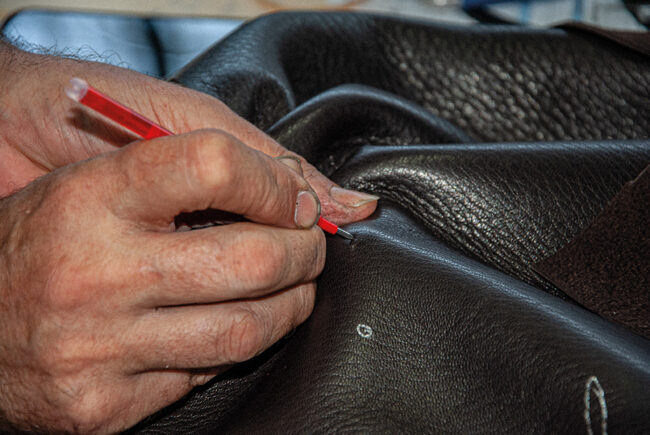
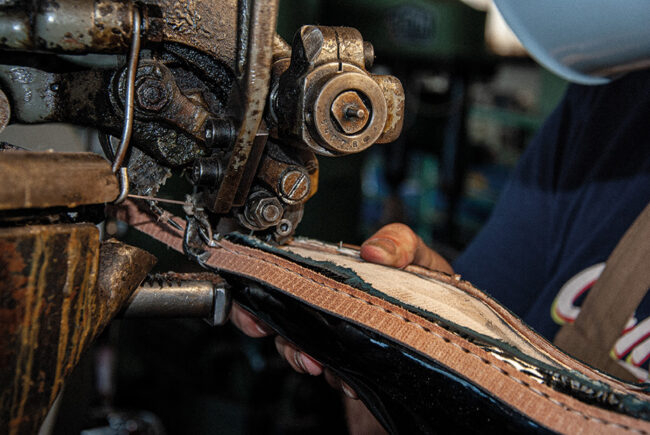
The various stages in a meticulous assembly, assembly of the upper on the last, work on the assembly wall, inspection of a leather (note, circled in white, the skin defects that have been noticed. These parts will not be used) and fitting the welt.
Mesure, MTO et prêt-à-porter
La découverte d’un pied Mario Bemer prêt-à-porter est une expérience intéressante pour l’amateur, car la chaussure qu’il observe présente les caractéristiques techniques et de finitions de marques positionnées beaucoup plus haut en termes de prix et d’image : belles peaux souples et pleines (pas de parties creuses observées), toiles de qualité supérieure, formes à monter équilibrées présentant une septième largeur confortable (tous ceux qui souffrent de formes trop étroites à ce niveau savent son importance), montages et finitions soignés, couleurs personnelles ; pour environ 400 euros l’acheteur en a (très) largement pour son argent. A côté d’une collection prêt-à-porter proposant plus de 70 modèles (pour la plupart déclinés en 4 ou 5 couleurs), l’offre MTO permet aux amateurs de personnalisation de commander des modèles uniques, dont ils choisiront la (ou les) couleur(s), la peausserie (idem), le montage, la semelle et les finitions. Tout au long du processus de fabrication des paires MTO, depuis le premier contact jusque la livraison de la paire, l’acheteur sera en contact avec un référent Mario Bemer, avec lequel il s’entretiendra par téléphone, e-mail ou vidéo-conférence afin de suivre la fabrication de ses chaussures, et au besoin y réagir à un moment ou à un autre. Enfin, au sommet de la pyramide la mesure constitue l’expérience ultime, celle qui commence par la prise de mesures des pieds et la réalisation d’une forme à monter en bois spécifique à chaque client (et pour chaque client à chaque type de chaussure, la forme d’un richelieu n’étant pas comparable à celle d’un loafer ou d’une bottine) et se poursuit par les essayages destinés à vérifier la conformité de la création mais aussi et surtout le chaussant et les qualités de marche des chaussures, qui tiennent d’abord aux dimensions de la forme et du patronage, mais aussi au bout dur, aux contreforts arrière, au remplissage de la semelle… Un travail artisanal qui se fait à quatre mains entre le client et son référent.
L’un des avantages de la mesure est aussi de permettre le choix d’une peausserie rare, et si la maison propose les meilleurs cuirs de Toscane (lisses, grenés ou suédés), elle travaille aussi les peaux exotiques comme le croco (un peu ostentatoire mais que certains apprécient), le chameau (plus rare) ou le koudou (d’une souplesse au toucher et au porter extraordinaire).
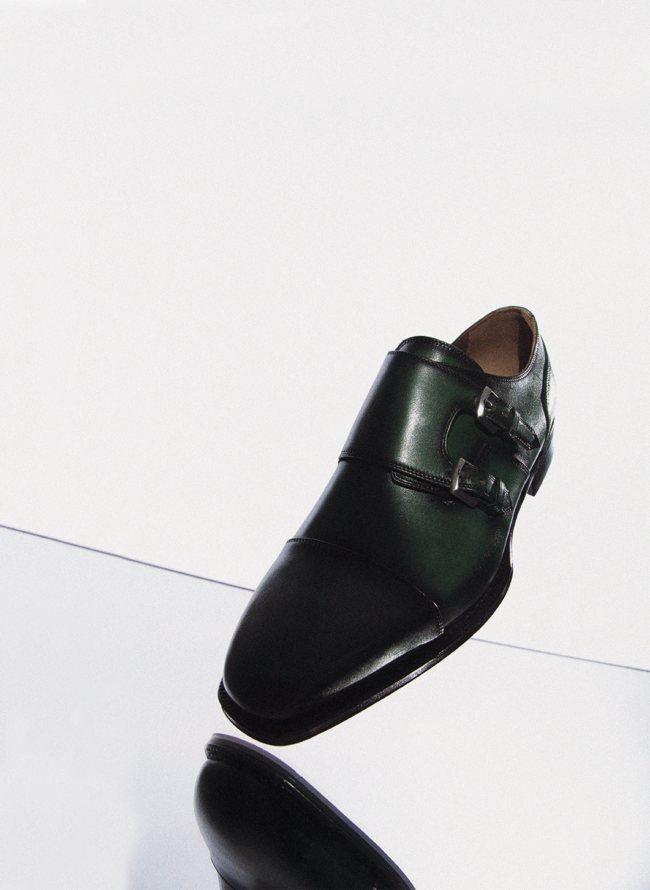
The Mathis 2 double buckle, characterised by the very long toe cap that elongates its silhouette and by its dark green patina.
Les modèles que l’on découvrira sur nos photos sont nettement représentatifs des créations Mario Bemer : au fil des photos on observera les finitions du loafer Lillo en cuir lisse et grené (lequel Scottish grain bleu marine habille le quartier talonnette et les bords francs), raffinées jusque la roulette de 12 qui relève le talon, la personnalité du cambre Mark Woven en cuir tressé (notons le travail en lisses rondes intérieures et extérieures, les œillets métalliques et le passepoil relevant bords francs et oreilles de quartiers), la patine profonde du tassel loafer Luca, le patronage original du derby double empeigne bimatière Nico, le montage stormwelt de la double boucle Mathis et ses boucles vieillies, la pureté du Belgian loafer Libero, et bien entendu la personnalité marquée du loafer Lillo Summer, modèle bimatière cuir et toile écrue, à languette frangée type golf, montée sur une forme à bout carré atténué extrêmement équilibrée, une petite merveille que nous espérons voir déclinée prochainement en toile écrue et cuir gold, bordeaux, bleu marine…
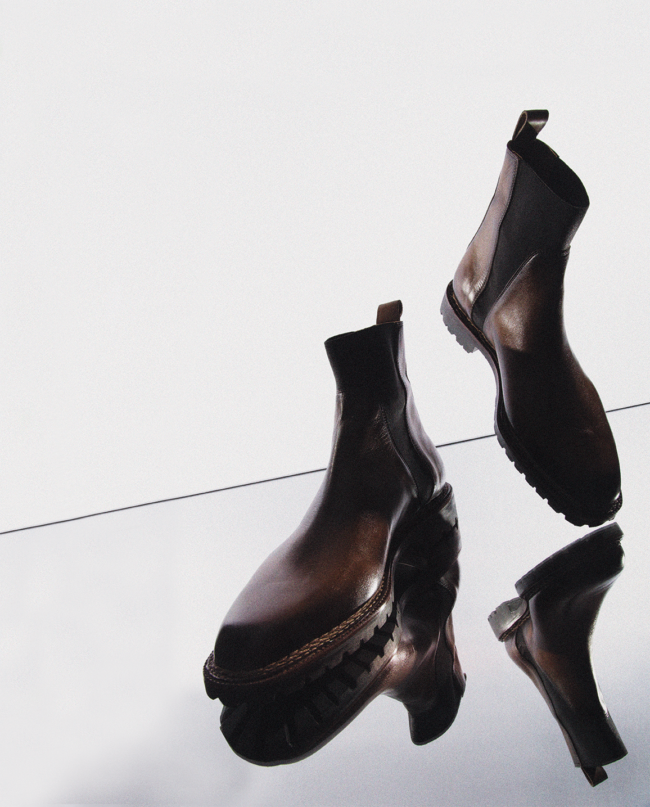
*********************************
By an enthusiast, for enthusiasts
Mario Bemer is a well-known brand among calceophiles, but one that remains unjustly unknown to the general public. This is unfortunate, both because of the personality and quality of its products, and because of its history, which is very much in line with the slow-fashion approach that is so dear to us. A good reason to find out more about it on a trip to Florence.
In the small world of quality footwear, the Bemer name was brought to the pinnacle by Stefano Bemer, a brilliant bootmaker who was a sort of Little Prince of the profession. His untimely death at the age of 48, after a long illness, plunged the profession into mourning. Exclusively focused on his art (he had set himself the goal of producing nothing less than “the best shoes in the world”), Stefano was acclaimed in Florence, where his work was greatly appreciated, but totally unknown abroad, which is why his brother Mario joined him in 1999, to put the brand on the international map. Their collaboration led to the opening of a boutique in Tokyo and, above all, to the diversification from the exclusive activity of bespoke bootmaking to a ready-to-wear range of bootmaking culture. For a dozen years, Mario was totally immersed in his brother’s quest for perfection, and when his brother died in 2012, he decided to carry on his name. To launch the Mario Bemer brand, which would benefit from the same exacting standards as Stefano Bemer, he joined forces with Luca Nardini, heir to a family of shoemakers committed to style as much as technique.
A family of bootmakers since 1930
When the two men met, Luca Nardini had a much longer-standing reputation than Mario Bemer. In his family, the tradition of men’s footwear goes back five generations. It began in 1930 with Nardino Nardini, Luca’s great-great-grandfather, who was the family’s first bootmaker. As was often the case at the time, he passed on his craft to his son, Alberto, during the tumult of the Second World War. After the war, Alberto opened a boot-making workshop in Monsummano Terme, Tuscany, in 1946. He worked there with his wife and trained their four sons, Moreno, Vinicio, Rinaldo and Roberto, who joined him one after the other. After Alberto’s death in 1970, the four sons carried on the family tradition until Vinicio, who had trained his son Marco in the trade, decided to stop shoe production and refocus the company on design, prototyping and modelling, an activity that took off in the 1990s, when the footwear market exploded to take on the dimensions we know today and the major fashion houses all decided to invest in this sector, which was related to clothing. Throughout the decade, Nardini put its experience and creativity to work for a number of major brands, remaining in the shadow of these international names. The company could have continued with this well-established business model, but the arrival of Marco’s son Luca in 2001 changed everything. Dynamic and ambitious, the young man wanted to start making high-quality shoes again, and managed to convince his father and grandfather to join him in this adventure. Their expertise was to weigh heavily in the balance of success. It wasn’t long before Vicinio, who had known the manufacturer Nardini from his early days, became passionate about this new adventure, and devoted himself body and soul to his grandson’s business, personally taking charge of the design, modelling and prototyping of the first collections. He remained in this role until his death in 2016.
Up until then, the history and development of the company, which has perpetuated the know-how and reputation of its founder, had been fairly similar to those of some of the other big names in Italian footwear. Until fate came knocking at the door. The meeting between Luca Nardini and Mario Bemer was to change everything. It happened in 2012 in Florence. At the time, Mario was looking to finance the launch of his eponymous brand, and to do so he was using the name it bears and the image of excellence it conveys. With Luca he not only found a partner capable of financing the project, but above all a man who knew everything there was to know about making shoes, from design to finished product. Luca, for his part, met a man of the trade whose name promised vision, the extra soul needed to turn a small company into a success. They soon became partners, the Chairman and majority partner Nardini supported by Bemer, who may be in the minority but whose name underpins the new brand. The two men shared roles very naturally: Mario Bemer was responsible for welcoming customers and talking to them in the Via Maggio boutique, while Luca Nardini was in charge of product innovation, for which he surrounded himself with the best craftsmen in a region with no shortage of them, and of developing the brand internationally. Mario Bemer’s lack of involvement in defining style, shapes and patterns, or even in production, was not without its problems within the brand that bears his name, however, and created a distance between the two partners, and soon the disagreement between the two men over the direction to be given to the company became obvious. In 2018, Luca Nardini parted company with Mario Bemer and was left alone to continue the adventure of a small Florentine house committed to the refinement of its style and history, and to uncompromising quality in both made-to-measure and ready-to-wear products.
An unwavering commitment to style and quality The heritage he inherited from his father and grandfather gave Luca Nardini a wide-angle vision of his profession: on the one hand, a visceral attachment to manufacturing quality, which implies attention to leatherwork, assembly and details; on the other, the importance of style, which ultimately determines whether a shoe is liked or not. As a good Florentine, he knows the importance and influence of Pitti Uomo on trends, and he understands that in the space of a generation, footwear has gone from being an accessory to an outfit to becoming a fully-fledged element of that outfit, and even a determining factor in it. A situation that would have been unthinkable just fifteen years ago. That’s why he designs the Mario Bemer collections for this new generation of elegant men and women, who are consolidating their ideas on blogs and Instagram accounts dedicated to elegance, and refining for them combinations of materials and colours, double rows of hand-stitching, hand-sewn welt, loafers, richelieu, derbies, buckles… The basis of the brand’s success: the timelessness of its style, based on a revisited classic, and the variety of its offer, which is based as much on its patterns as its weltings, from Goodyear to Blake by way of Rapido, and of course on a triple proposition of bespoke, MTO and ready-to-wear.
Bespoke, MTO and ready-to-wear
Discovering a Mario Bemer ready-to-wear shoe is an interesting experience for the amateur, because the shoe he is looking at has the technical and finishing characteristics of brands positioned much higher in terms of price and image: beautiful, supple, full skins (no hollow parts to be seen), top-quality canvas, balanced lasts with a comfortable seventh width (anyone who suffers from lasts that are too narrow at this level knows its importance), meticulous fittings and finishes, personal colours; for around 400 euros the buyer gets (very) ample value for money. Alongside a ready-to-wear collection of more than 70 models (most of which are available in 4 or 5 colours), the MTO offer allows customisation enthusiasts to order unique models, for which they choose the colour(s), the leather (idem), the fitting, the sole and the finish. Throughout the MTO manufacturing process, from the first contact to the delivery of the pair, the buyer will be in contact with a Mario Bemer advisor, with whom he or she will speak by telephone, e-mail or video-conference in order to follow the manufacture of his or her shoes and, if necessary, react to them at any time. Finally, at the top of the pyramid, bespoke is the ultimate experience, the one that begins with taking measurements of the feet and creating a wooden last specific to each customer (and for each customer to each type of shoe), this is followed by fittings to check the conformity of the creation, but also and above all the fit and walking qualities of the shoes, which are determined primarily by the dimensions of the last and pattern, but also by the hard toe, the rear stiffeners, the filling of the sole, etc. It’s all done by hand, with the customer and the fitter working together.
One of the advantages of tailoring is that it allows you to choose a rare leather, and while the company offers the best Tuscan leathers (smooth, grained or suede), it also works with exotic skins such as crocodile (a little ostentatious, but appreciated by some), camel (rarer) or kudu (extraordinarily supple to the touch and wear).
The models in our photos are clearly representative of Mario Bemer’s creations: in the course of the photos, you’ll notice the finish of the Lillo loafer in smooth, grained leather (with navy blue Scottish grain on the heel quarter and the clear edges), refined right down to the 12 mm roller that raises the heel, the personality of the Mark Woven camber in woven leather (note the work in round inner and outer hems, the metal eyelets and the piping on the clear edges and quarter lugs), and the deep patina of the Luca tassel loafer, the original pattern of the Nico two-compartment double vamp derby, the stormwelt assembly of the Mathis double buckle and its distressed buckles, the purity of the Libero Belgian loafer, and of course the marked personality of the Lillo Summer loafer, a two-compartment model in leather and unbleached canvas, with a fringed golf-style tongue, mounted on an extremely well-balanced form with an attenuated square toe, a little marvel that we hope to see available soon in unbleached canvas and gold, burgundy, navy blue leather…
